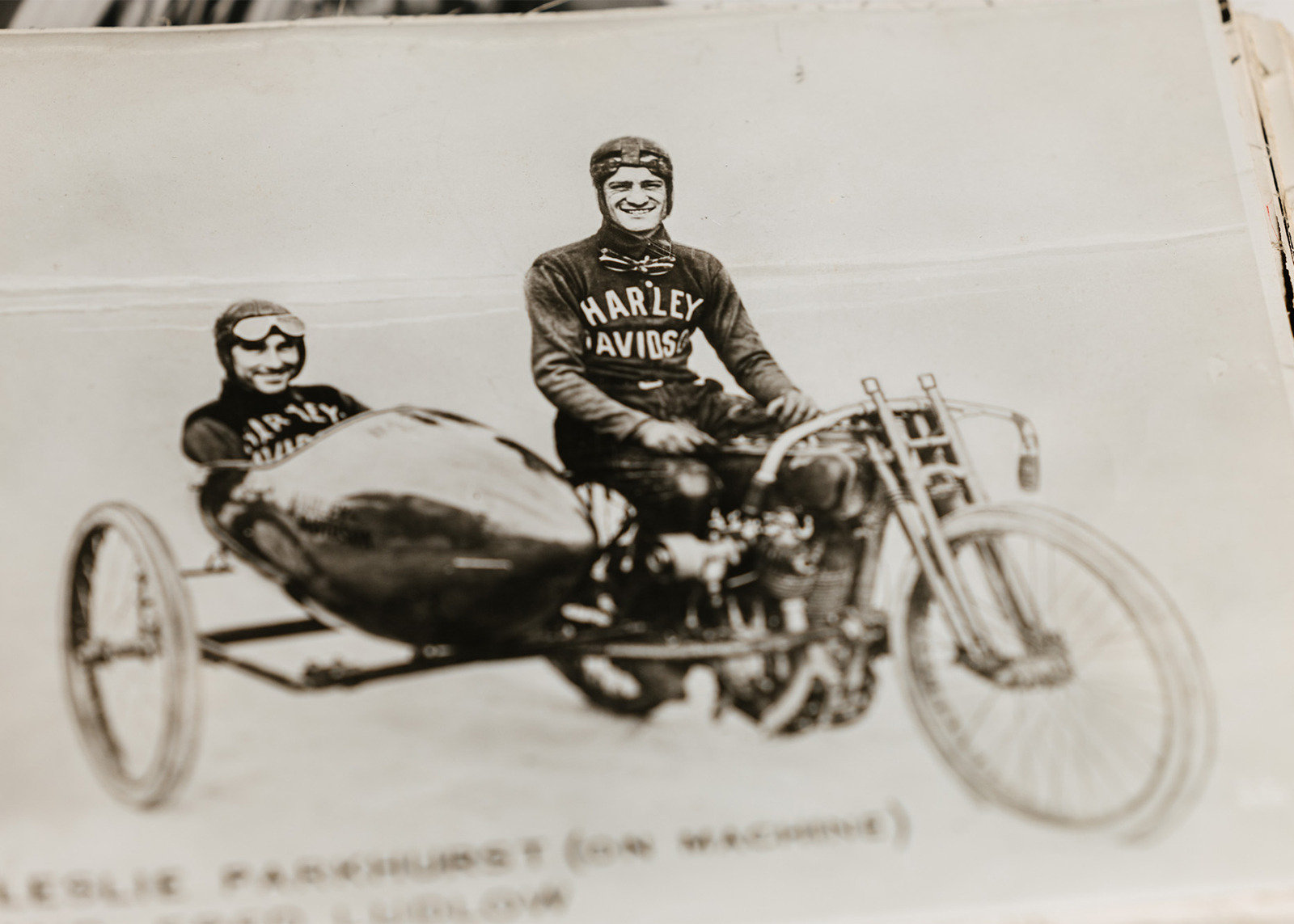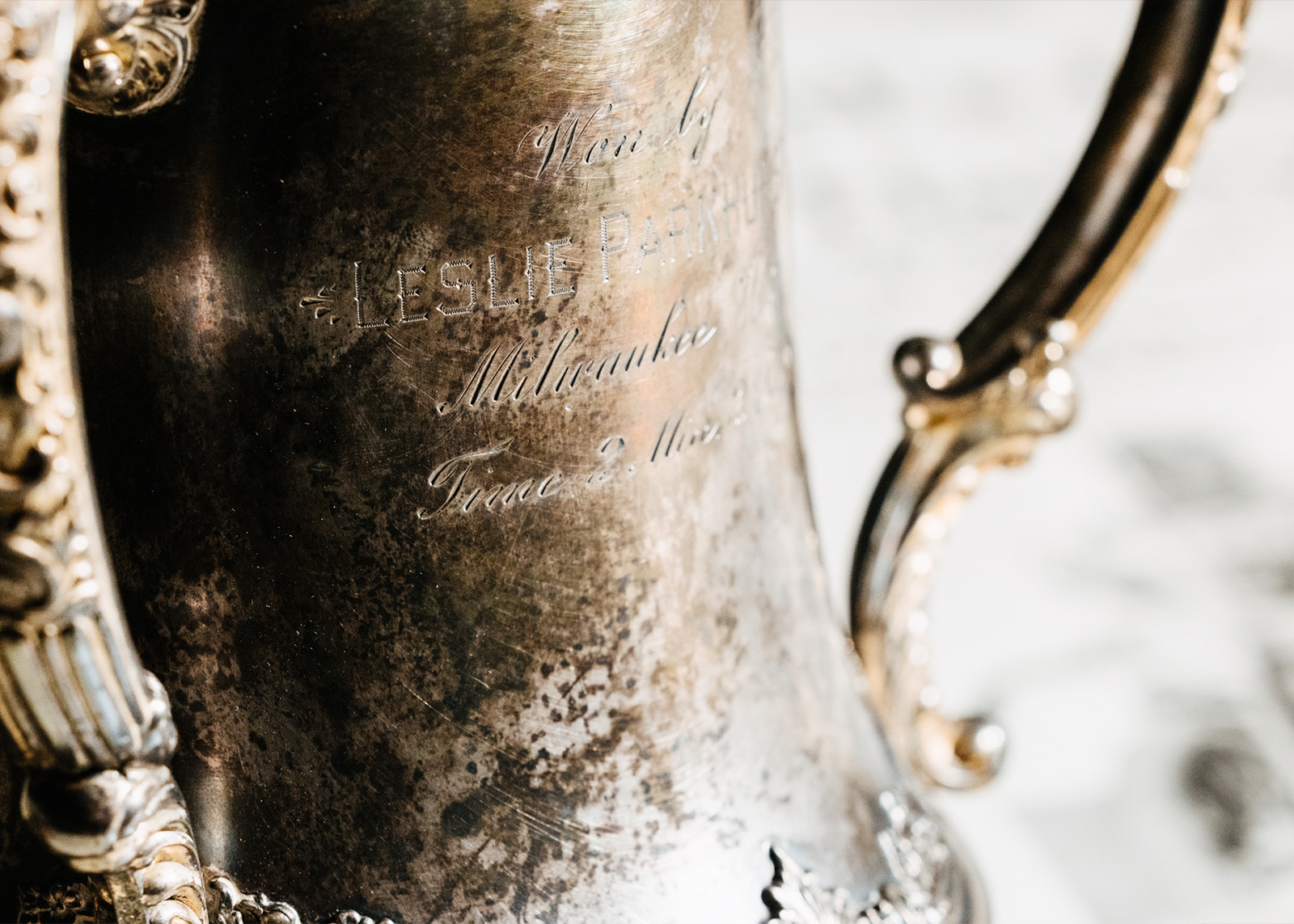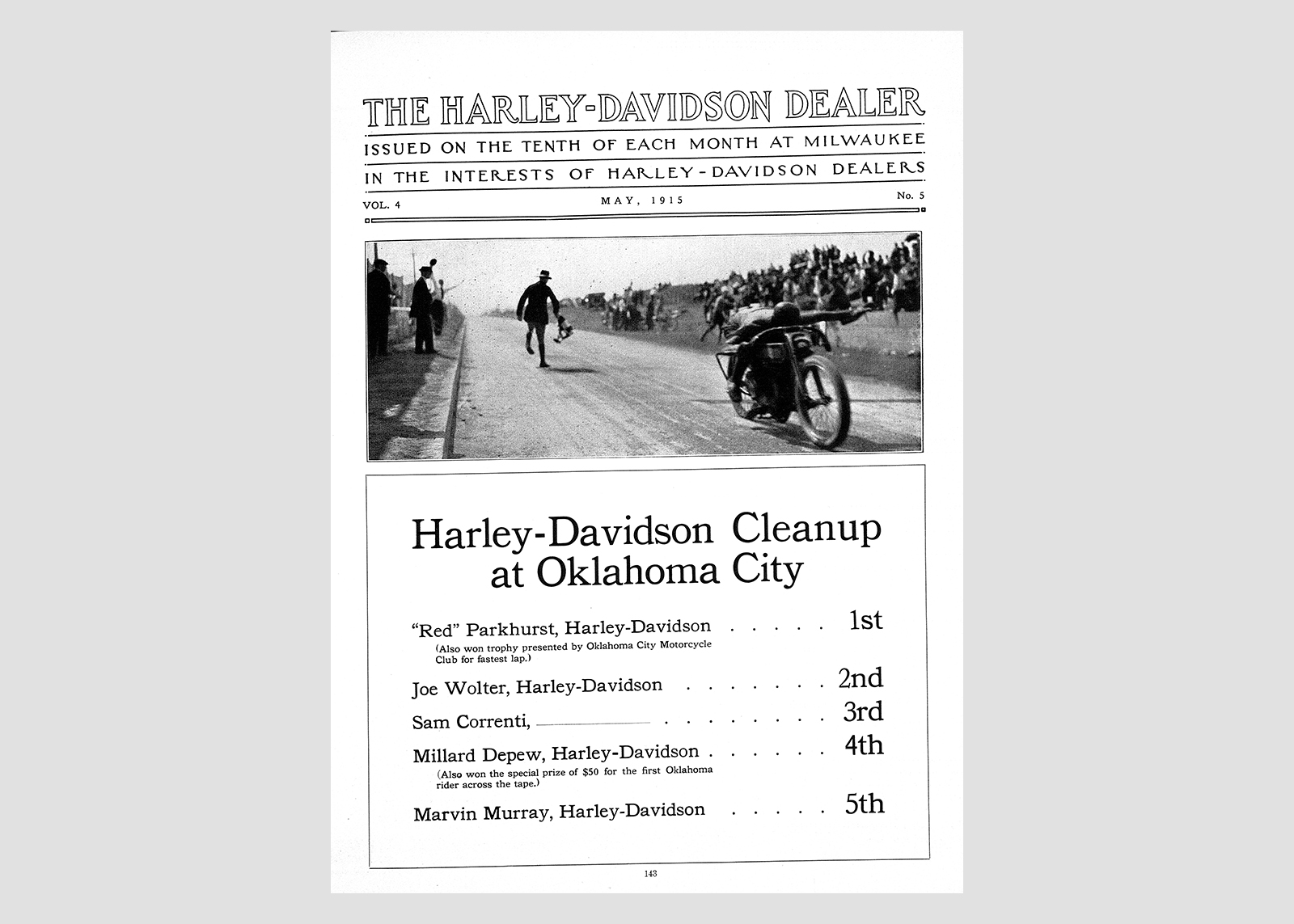
Parkhurst and Fred Ludlow posing with record-breaking bullet sidecar rig on Daytona Beach, 1920.
Leslie E. Parkhurst started racing at 13 years old on the Tuileries track in Denver. He went pro three years later, racing in the opening of the Dallas Motordome in 1912. In 1914, while he was racing in Milwaukee, Harley-Davidson asked Parkhurst to test one of their machines. Shortly after, they signed him as one of the first members of the Harley-Davidson racing team, which was the start of what would become the famed Wrecking Crew. That first season, Parkhurst and the machines he rode were a big attraction at the Chicago motorcycle show and factory visits to Milwaukee. He quickly became a brand celebrity.
Parkhurst was typically referred to by his nickname, Red. Perhaps more noticeable than his ginger hair was his signature smile, and “Smilin’ Red” was a popular moniker as well. Neither his hair nor his demeanor went without comment in most race coverage, and Smilin’ Red was as much a comment on his personality as appearance. Parkhurst was a good-natured athlete whose enthusiasm made him a real crowd-pleaser, both on and off the track.
On the track, Parkhurst was an entertaining rider to cheer on. Part of what earned him so many wins was his tenacity; neither rain, broken pedals, nor catching fire during practice would stop Red from racing. He rode “like a rubber ball” according to one reporter who described him falling off his bike but immediately jumping up and continuing the race. Speed was another factor. Once called “a veritable demon on wheels,” he frequently set new records while racing.
Throughout much of his career, Parkhurst dominated the scene. Donning a Harley-Davidson jersey, Red raced, won, and broke records at some of the most iconic races and tracks of the era, including a 24-hour mileage record at Sheepshead Bay, land speed records at Daytona Beach, and winning the first Marion Cornfield Classic.
Parkhurst was pretty much a full-time racer through 1922, and he continued racing in select events through 1924. When he wasn’t racing, Parkhurst worked for race-adjacent businesses such as Firestone, Gates Rubber Company, and, of course, Harley-Davidson. His positions at HDMC included sales and promotions in the 1920s and civilian government inspector during World War II.

Parkhurst and Fred Ludlow posing with record-breaking bullet sidecar rig on Daytona Beach, 1920.

From The Harley-Davidson Dealer May 1915 issue.
Red was a venerable part of early motorcycle history. In 1936, Motorcyclist magazine invited him to write a racing retrospective, and by 1944, The Enthusiast was asking for his advice to new riders returning from World War II. He remained a celebrated guest of motorcycle clubs well into the 1950s. Parkhurst died in 1972.
Leslie Parkhurst was an esteemed part of early Harley-Davidson history: a friendly face found in the pages of our own published histories and smiling down from the walls of the Museum.
“Who is there in the crowd that attends the motorcycle race meet, no matter how disinterested he maybe in the sport, who is not captivated by the big boyish grin of Leslie Parkhurst? One of the veterans of the track, harking back to the old "murder-drome" days, Parkhurst probably has a bigger following in the stands than any other rider.” – Motorcycle & Bicycle Illustrated, February 26, 1920


The trophy above sits in the archives collection, not visible from the Museum. Although it was previously dated around 1919 (the same time as Parkhurst’s other trophies in the collection), research for this article prompted the archives to dig a little deeper.
The silver-plated loving cup style trophy is from the 150-mile race at Oklahoma City, April 20th, 1915. Parkhurst received the trophy for the fastest lap of the race, which he accomplished in 2 mins and 2 seconds during his 28th lap. He also won the race.
Photos of the trophy were taken at the company headquarters in 1915 and remained in the company archives. The trophy came to the collection later.


The Dealer cover and page scan above covered the trophy-winning race. That same photoshoot for the cover image produced the top hat and pipe image included in our archives photoshoot.
Discover culture and history through stories and exhibits that celebrate expression, camaraderie and love for the sport.
